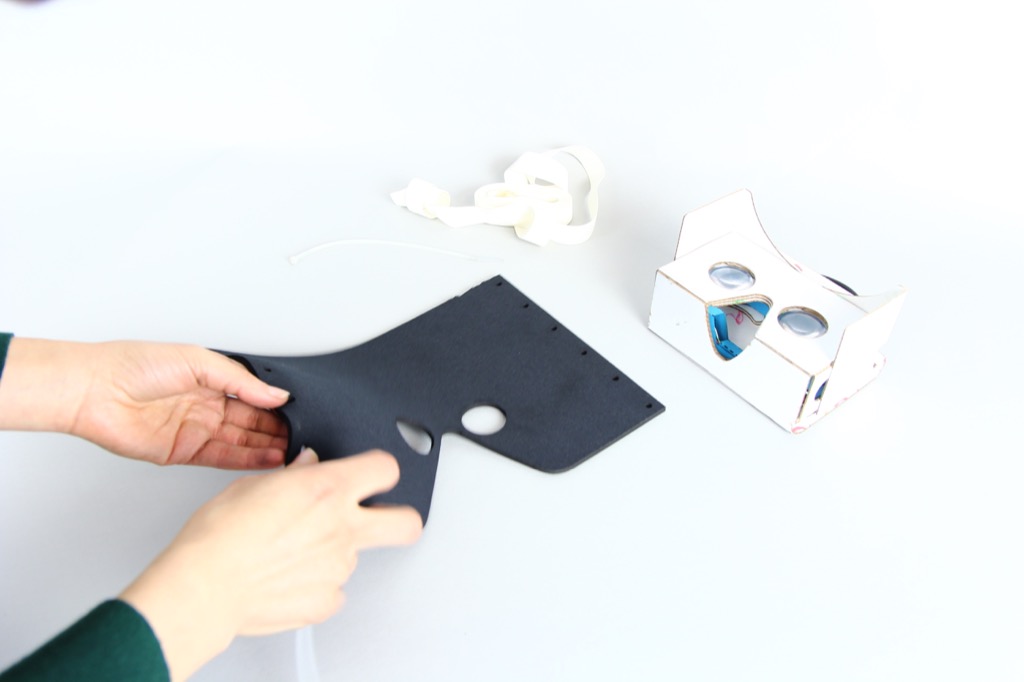Watching a persons's eyes can reveal many things, from problems with their visual perception, to an indication of what it is they want to do next, to dangerous levels of tiredness.
eyeskills.org started this project to better understand and work with Lazy Eye using virtual reality. We wanted to reduce the cost of eye tracking by 10X, to make it accessible to the 72% of the world earning less than $10 a day.
Our goal led us to design a solution which works with second generation Google Cardboards, simply replacing its central insert. Simple. Affordable. Ecologically sound.
The core uses nothing more than cardboard, which can be cut by laser, or by hand. Just fold it up and insert it.
In testing, we also found that the design of Google's cardboard was a poor fit for many people's foreheads and noses. It wasn't just uncomfortable, but let in irritating amounts of light.
We think our solution is quite ground-breaking in its simplicity and affordability. Folded Neoprene. Again, to be cut by laser or by hand.
Our approach is to use off the shelf components wherever possible. Our cameras are based on endoscopic cameras which work with android, connected to a usb hub which can then allow an android phone to provide both power and image processing!
These cameras are held in place using custom 3D printed parts, but it's just as possible to use wedges of wood or hot glue - if not as pretty!
Many thanks to careables, be-able and the Hasso-Plattner-Insitut for helping make this happen!
 ben
ben












 Benjamin Blundell
Benjamin Blundell
 WalkerDev
WalkerDev
 blorgggg
blorgggg